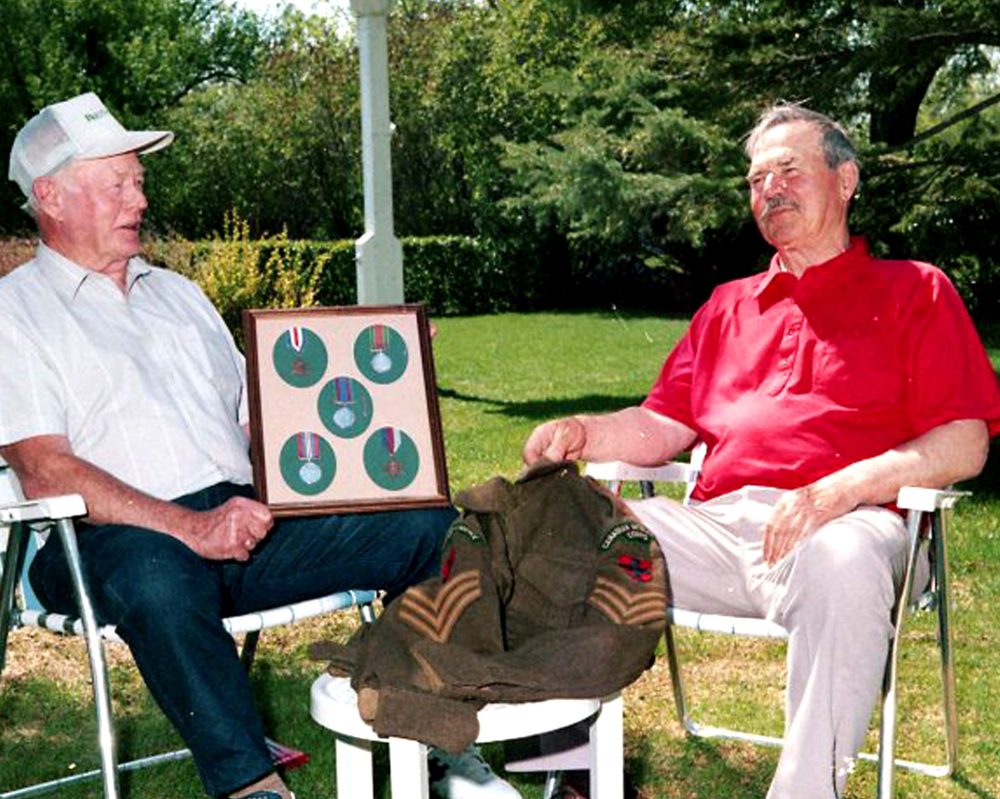COLUMN: Carillon Flashback June 1, 1994 – D-Day marks new beginning for vets
Advertisement
Hey there, time traveller!
This article was published 31/05/2024 (441 days ago), so information in it may no longer be current.
When Steinbach D-Day veterans Alex Tarasenko and Irving Scott get together, they don’t usually like to talk about the experiences they shared on the beaches of Normandy, 50 years ago.
But that doesn’t mean memories of lost comrades or of the historic battle that changed the course of history during the Second World War are any less vivid for either veteran.
Scott and Tarasenko both vividly remember hitting the beach in six feet of water with 50-pound packs on their backs, while serving their country five decades ago. This would be the invasion that turned the tide in favor of the Allied forces in Europe.

Scott, with the Canadian Scottish Regiment, was in the first wave that landed between 5 and 6 a.m., June 6, 1944, while Tarasenko, with the Second Army Intelligence Corps, came in with the second wave, less than an hour later.
Thousands of “barrage balloons the size of small houses” were released overhead to keep German aircraft from strafing landing craft and Allied troops on the ground, Tarasenko recalls.
Allied bombers took out about half of the gun placements on the beach and fortunately those left were limited in the arc they could fire. Once past them, they could be ignored by advancing troops, Tarasenko explained, since the guns could not be fired inland.
The landing had to be achieved on high tide because of the danger to landing craft from mines the Germans had attached to steel shanks buried just offshore. As it was, once the landing craft hit the beach and the platform on the front dropped down, the men still had to fight the waves to struggle ashore.
“That 50-pound backpack, with everything wet, feels more like 400.”
On D-Day, about 18,000 Canadians crossed the English Channel and were ashore by nightfall on June 6, 1944. The first day there were 6,600 American, 3,500 British and 1,000 Canadian casualties.
“It was Juno Beach where we landed. To the east, the Brits hit Sword and Golden beaches and to the west the Americans landed at Utah and Omaha.”
By the end of the landings on July 3, one million troops had been put ashore. By the end of the operation, 77 days later, the Allies had 153,000 wounded, 17,000 dead and 19,000 missing or taken prisoner.
The war ended for Scott when he took a bullet in the shoulder while crossing the Rhine River, as Allied troops continued to advance in the German-occupied territories in February, 1945.
By the time Scott got out of a British hospital in Belgium, it was mid-April. He then spent two weeks at a convalescent camp and a week’s leave to England was to follow. He hit London the night the war ended.
Scott returned home to Canada on New Year’s Eve, 1945.
Tarasenko, a member of the Canadian Intelligence Corps, said he was charged with the responsibility of interrogation of Dutch collaborators after the fighting in Europe ended.
He was on leave in Scotland, awaiting action in the Pacific theatre, when the first bomb was dropped on Hiroshima. He returned home to Canada on the Empress of Scotland in August of 1945.
For Tarasenko, the past 50 years have been “50 years of grace.”
“Thousands and thousands of Canadians are buried over there, and I was one of the lucky ones who walked away from it.
After the war, Tarasenko drove a highway bus on a daily route from Winnipeg to Pine Falls for a couple of years, before becoming a dragline operator with the RM of Hanover and going on to work for the Town of Steinbach public works until his retirement in 1985.
Scott retired in 1987, after 37 years with the Manitoba Highways Department. He marked that occasion with a trip to Holland, which was then marking the 45th anniversary of liberation by the Allied troops.
